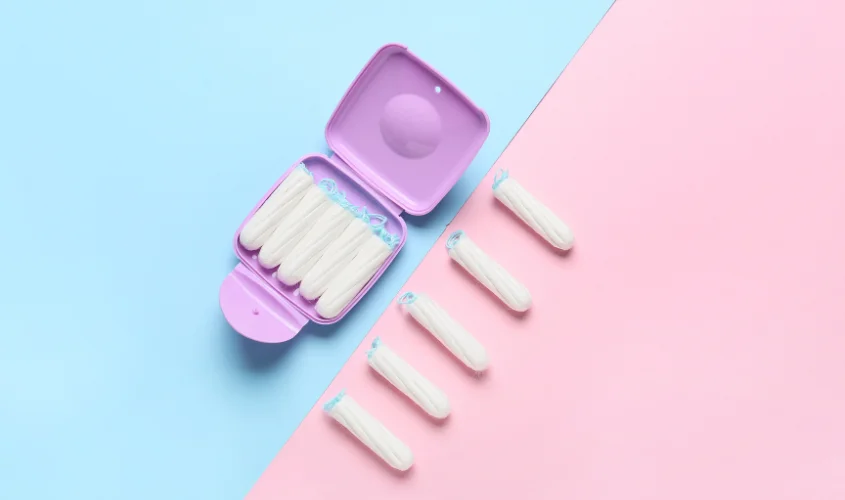
- 16.10.2024
- Menstrual Health Blog
Do you prefer tampons? Then check out the 10 most common mistakes in using them
Tampons are one of the most popular hygiene methods during menstruation. However, when using them, girls sometimes make mistakes that can affect comfort and safety. What are these mistakes? Find out from our article:
- Choosing the wrong size. One of the key factors for comfort when using tampons is choosing the right size. Using a tampon that is too big or too small can be uncomfortable and even cause irritation.
- Incorrect insertion technique. Tampon insertion should be done with the correct technique. It is important to insert it upwards, towards the spine, rather than straight in. This will help ensure maximum comfort and prevent leakage.
- Wearing duration. A tampon should not be left inside the vagina for more than the time indicated on the package (usually 4-8 hours). Prolonged use of a tampon can lead to infections or toxic shock syndrome.
- Using during nighttime sleep. When sleeping, it is recommended to use special tampons with higher absorbency. Alternatively, it is preferable to use overnight pads to prevent leaks.
- Incompatibility with IUD. If you have an intrauterine device (IUD) installed, be sure to consult with your doctor about the safe use of tampons to avoid displacing the IUD.
- Using with hormonal products. Some hormonal products, such as non-contraceptive patches, are incompatible with tampon use.
- Inadequate tampon changes. Regular tampon changes are crucial for maintaining hygiene. Remember to change your tampon every 4-8 hours, even if your period is not very heavy. This will help prevent infections.
- Need for additional protection. Tampons can be effective in absorbing blood, but they can sometimes leak, especially at the beginning or end of your period. For extra protection, it is recommended to use pads or special underwear.
- Neglecting hand hygiene. Before inserting or removing a tampon, be sure to wash your hands with warm water and soap. This will help prevent bacteria from entering the vagina and reduce the risk of infections.
- Continuing use despite discomfort. If you experience discomfort, irritation, or pain when using a tampon, do not continue using it. This may be a sign of an incorrect size or type of tampon. In such cases, it is better to consult a doctor.
Conclusion
Proper tampon use is not only a matter of comfort but also health. By avoiding common mistakes, you can ensure maximum effectiveness and safety when using this hygiene product. Remember to choose the right size, maintain hand hygiene, change tampons regularly, and consult a doctor if problems or doubts arise. This way, you can feel confident and comfortable during your period.
Now that we’ve covered the 10 most common mistakes when using tampons, let’s move on to another important topic: daily pads — yes or no?














